Discover 11 hidden attractions, cool sights, and unusual things to do in Yellowknife (Canada). Don't miss out on these must-see attractions: Prince of Wales Northern Heritage Centre, Frame Lake, and Northern Arts and Cultural Centre. Also, be sure to include Fred Henne Territorial Park in your itinerary.
Below, you can find the list of the most amazing places you should visit in Yellowknife (Northwest Territories).
Table of Contents
Prince of Wales Northern Heritage Centre
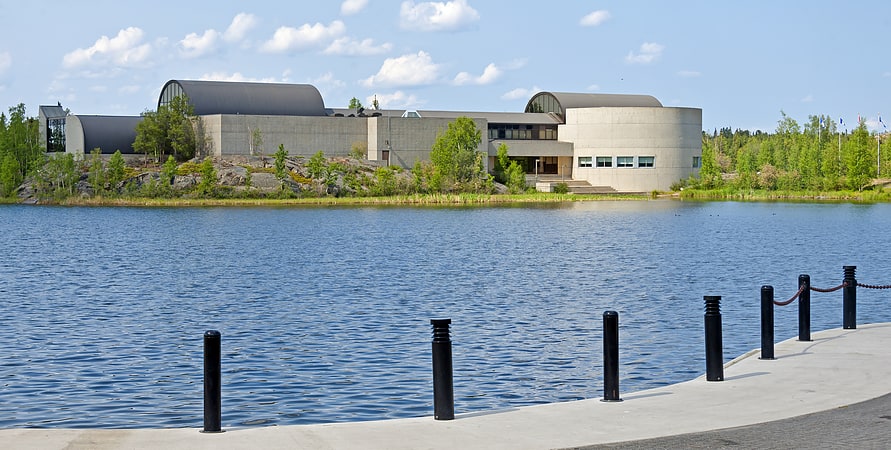
Museum in Yellowknife, Canada. The Prince of Wales Northern Heritage Centre is the Government of the Northwest Territories' museum and archives. Located in Yellowknife, Northwest Territories, Canada, the PWNHC acquires and manages objects and archival materials that represent the cultures and history of the Northwest Territories, plays a primary role in documenting and providing information about the cultures and history of the NWT, and provides a professional museum, archives and cultural resource management services to partner organizations.[1]
Address: 4750 48 St, X1A 3T5 Yellowknife
Frame Lake

Lake in Canada. Frame Lake is located in Yellowknife, Northwest Territories, Canada. It is an 84-hectare endorheic freshwater body located between the city's downtown section and a larger residential area. The Frame Lake Trail circles it, and city hall and the territorial legislative assembly building are on its shores.
Formed by meltwater after the end of the Wisconsin glaciation 20,000 years ago, Frame has been an important part of Yellowknife's history. The Dene in the area used it as a fishing spot before European settlement. In the early years of the city's growth, gold mines nearby dumped tailings in it and sometimes sewage. Later, when the city's New Town, now its downtown section, was surveyed and developed nearby, Frame offered accessible swimming and boating opportunities.
However, storm sewers diverted much of the runoff that fed it. Later development blocked the lake's only outflow, leaving it endorheic and complicating the problems caused by earlier pollution. By the early 1970s it no longer supported any fish; within two decades residents had stopped swimming or boating it out of fear of leeches. Subsequent studies have shown that the lake completely eutrophied sometime in the mid-1990s. They have not, however, been able to determine whether that was due to climate change, pollution or some combination of both; the possibility exists that the lake has always been at a higher trophic state than others in the area.
Some city residents have agitated for efforts to reclaim the lake so it will once again be a destination for swimmers, anglers and boaters in warm weather. To do so, it will be necessary to reoxygenate the water to the point that fish can again inhabit its waters. This could be accomplished either by aeration or dredging, which would remove the accumulated rotted organic matter on the lake bed that currently renders it anoxic when the lake is frozen over in the winter.[2]
Northern Arts and Cultural Centre
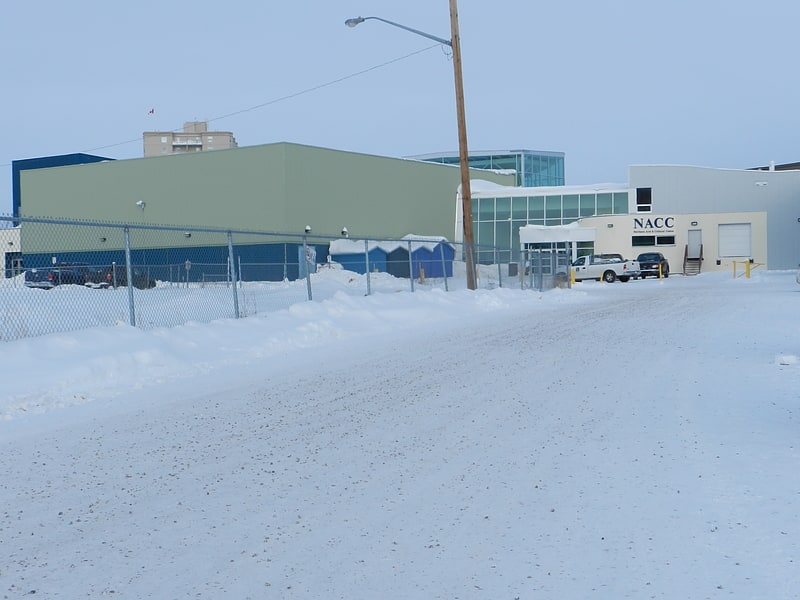
Cultural center in Yellowknife, Canada. The Northern Arts and Cultural Centre is located in Yellowknife, Northwest Territories, Canada. It is the only performing arts centre in the NWT.
The 313 seat Centre opened May 3, 1984. Created by Yellowknife residents with major support from The Globe and Mail newspaper, the Centre was built with government, business, foundation and individual contributions from across Canada. Since then, with a mandate to “encourage the development of the performing arts from all cultural traditions", the institution has become the central point in the territory for community, territorial, national and international performing artists.
NACC is led by a volunteer Board of Directors. It engages in NWT community and educational activities, supporting programs for emerging and established NWT artists and outreach programmes for NWT schools, community and performing arts groups.[3]
Address: 4701 52nd Avenue, Yellowknife
Fred Henne Territorial Park
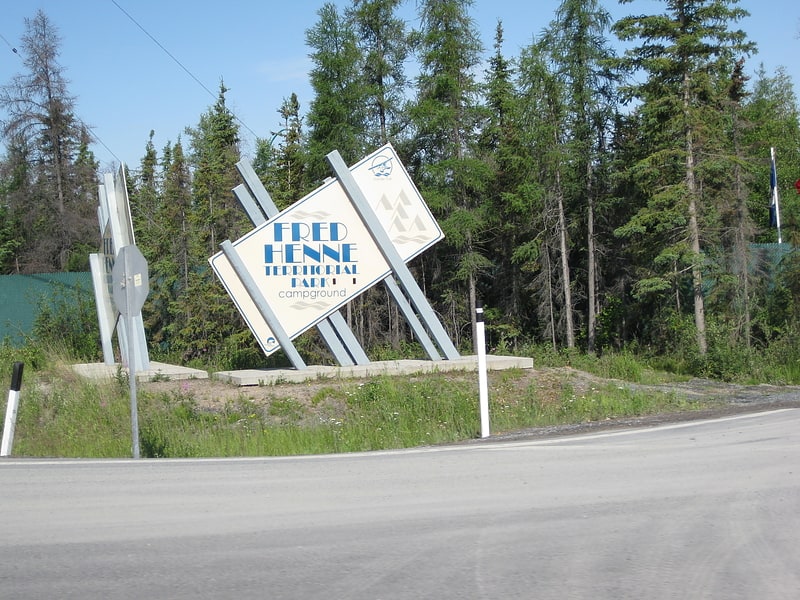
State park in Yellowknife, Canada. Fred Henne Territorial Park is a territorial park in the Northwest Territories of Canada, located on Long Lake near Yellowknife, one of 34 parks maintained by the Northwest Territories government under the Territorial Parks Act of 1988. It is also listed as a Canadian Protected Area. The Park is a termination point of the Frontier Trail, and the Cameron Falls Trail.
The park is named for Fred W. Henne, a former mayor of Yellowknife.[4]
Northwest Territories Legislative Building
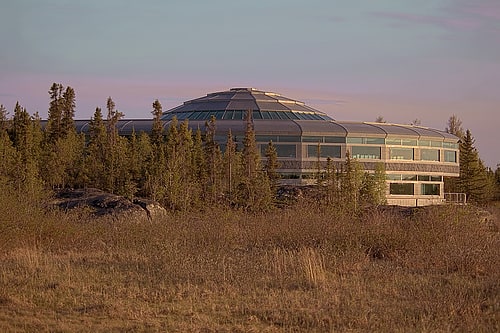
Home in Yellowknife, Canada. The Northwest Territories Legislative Building is the home of the Government of the Northwest Territories of Canada. The most recent building was built in 1993 and commenced usage in 1994. The Government has used many permanent and temporary facilities throughout its history.
The current building is two stories tall with two round halls, the Great Hall and the Caucus Room. It is located in Yellowknife, and overlooks Frame Lake. It was designed by Ferguson Simek Clark/Pin Matthews (of Yellowknife) in association with Matsuzaki Wright Architects Inc. (of Vancouver), and landscape architect Cornelia Oberlander.[5]
Greenstone Building

Building in Yellowknife, Canada. The Greenstone Building, officially the Greenstone Government of Canada Building, and sometimes known as the Greenstone Government Building, is located on Franklin Avenue in downtown Yellowknife, Northwest Territories, Canada. It is a four-storey building faced in stone, completed and opened in 2005. Within are the local offices of 16 federal government agencies. Prior to the building's construction they were scattered in different buildings around the city.
The name comes from greenstone, a rock found in great quantity in the area, from which the gold that led to Yellowknife's development was extracted. The building reflects that past in two other ways. Its interior stair tower is sided in slanted boards that recall the mineshaft towers still standing, and the location of a prominent local fault beneath the building is marked on the lobby floor.
It was designed by the Edmonton firm of Manasc Isaac to be environmentally sustainable. Its central atrium has a curtain wall with photovoltaic cells, the largest such structure in Canada, and the second largest worldwide, at the time of the building's completion. Five percent of the building's electricity comes from that wall; it is used to heat water, some of which comes from the building's green roof and local groundwater, resulting in the building using half as much water as a comparably sized building. Heating efficiency is such that the building remains adequately warm during subzero winter days when many adjacent offices have to close. The building's green design reportedly saves CDN$80,000 in energy costs and reduces greenhouse gas emissions by 370 tonnes (410 short tons) each year.
Two years after its completion, on time and under budget, the Greenstone Building was recognized with LEED (Leadership in Energy and Environmental Design) Gold certification by the Canada Green Building Council. It was the first building in Northern Canada to achieve that designation, and the first LEED Gold for the architects. In 2007 the Royal Architectural Institute of Canada further honored it with an Innovation in Architecture Award of Excellence.[6]
Address: Yellowknife, 5101 50th Avenue
Back Bay Cemetery
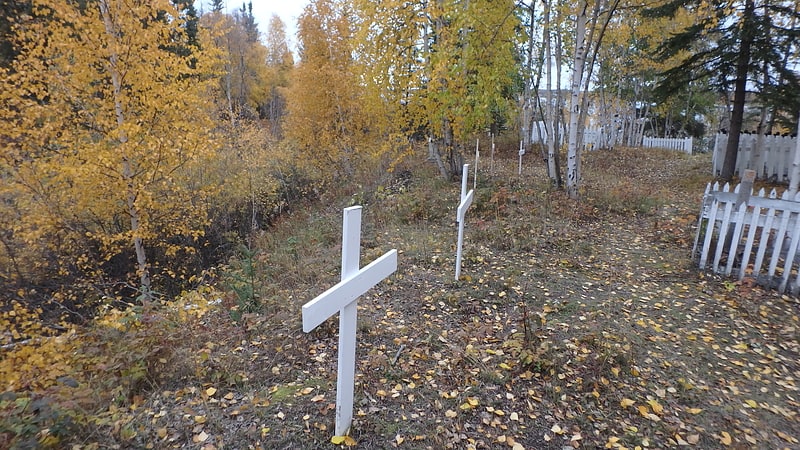
Cemetery in Yellowknife, Canada. Back Bay Cemetery, the original cemetery in Yellowknife, Northwest Territories, Canada, is located on Back Bay, a section of Yellowknife Bay on Great Slave Lake. The first recorded burial here was on September 27, 1938, following the death of Art McIntyre who committed suicide because of his fear of working underground. Between 1938 and 1946, when the cemetery was closed and relocated, over 40 people were buried here. Continual erosion of a nearby creek bank has damaged and exposed many graves. The site is designated a City of Yellowknife Heritage Site. By late 2014, the site had fallen into even greater disrepair and was in need of proper maintenance.[7]
Weaver & Devore Trading
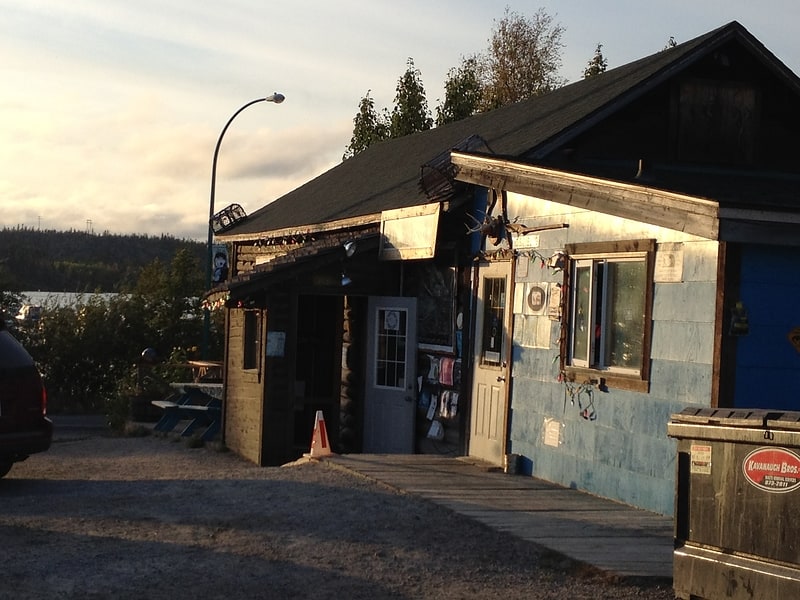
Weaver & Devore Trading is a family-run, independent general store located in Yellowknife, Northwest Territories, Canada. It was established in 1936 by Harry Weaver and Ellis "Bud" Devore, fur traders and watercraft men from Peace River, Alberta. Their first trade run to Yellowknife Bay in 1936 was in response to the increased mining activity that summer. The following year, the partners had erected a permanent log-cabin trading post and business boomed as Yellowknife grew into an important commercial centre. While Bud Devore sold out in 1954, the business continued to operate under the name Weaver & Devore and has remained in the Weaver family since Harry's death in 1957. The store discontinued the fur trading business in the 1980s and now specializes in general merchandise, produce, bush orders, and outdoor clothing.
The store expanded into its current premises, on the other side of Weaver Drive, in the 1960s. The original Weaver & Devore trading post from 1937 is now a popular local restaurant called Bullock's Bistro and a City of Yellowknife Historical Site.[8]
Down to Earth Gallery
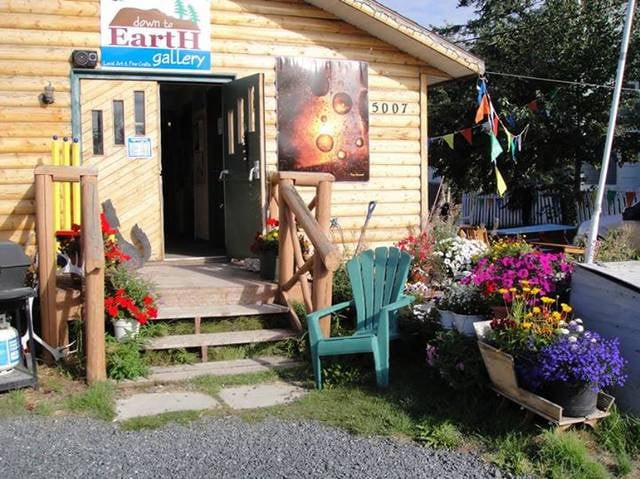
Art gallery, Museum, Shopping
Address: 5007 Bryson Dr, X1A 2A3 Yellowknife
Gallery of the Midnight Sun
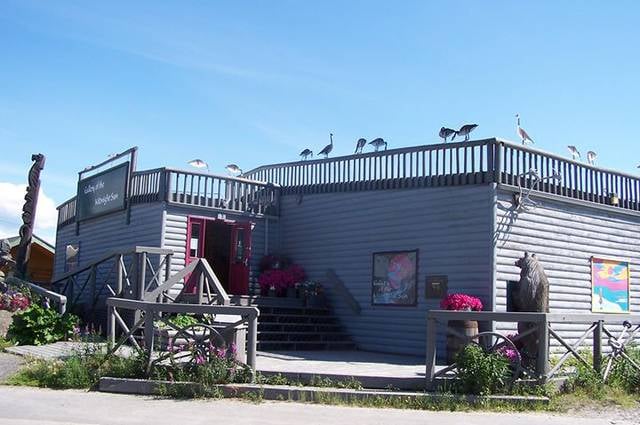
Gift shop, Art gallery, Museum, Shopping
Address: 5005 Bryson Dr, X1A 2A3 Yellowknife
Log School House
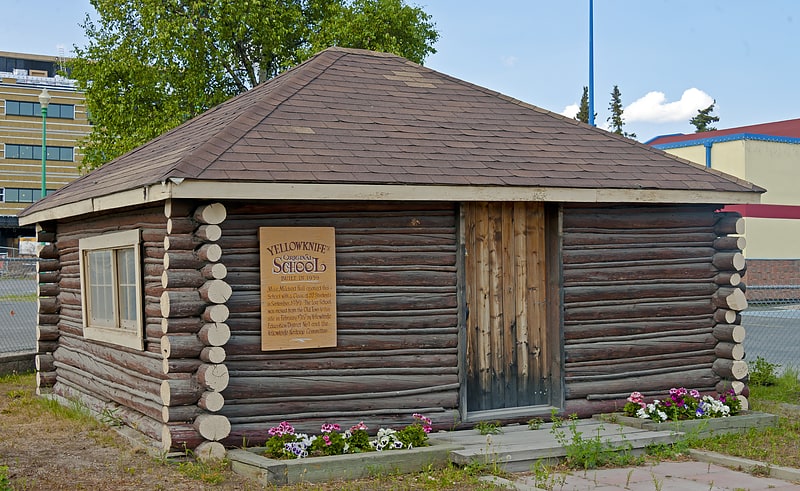
School house in Yellowknife, Canada. The first building used as a school in Yellowknife, Northwest Territories, Canada, is currently located on Franklin Avenue at the south end of New Town, the city's downtown section. It is a small log cabin dating to the mid-1930s. It was designated a City of Yellowknife Heritage Site in 1998, and listed on the Canadian Register of Historic Places in 2004.
Originally built by a local gold mining company, it was repurposed as a school in 1938, as the city's population had grown rapidly enough to require a school. Yellowknife Education District No. 1 was created to manage the school; its school board was the first democratically elected government body in the territory. Even with a 20-member student body, it was small enough that classes had to be held in two sessions; they were often interrupted by passing miners gawking or mistaking the building for a bar.
After two years, the new district moved to larger quarters to accommodate a growing population, and eventually the district was able to build its own school. the log cabin then became a laundry and private residence in later years before being offered to the city as a historical site. In 1987, the building was moved from its original location in Old Town to its present location on Mildred Hall elementary school property where it has since been restored to provide tours of early education in Yellowknife. It is currently closed to the public; eventual plans are to use it as a museum of Yellowknife's early educational history.[9]